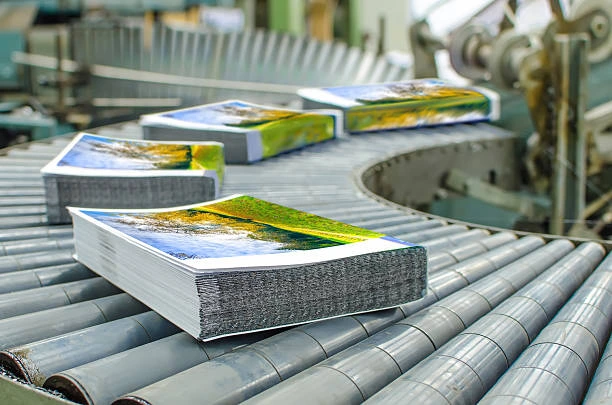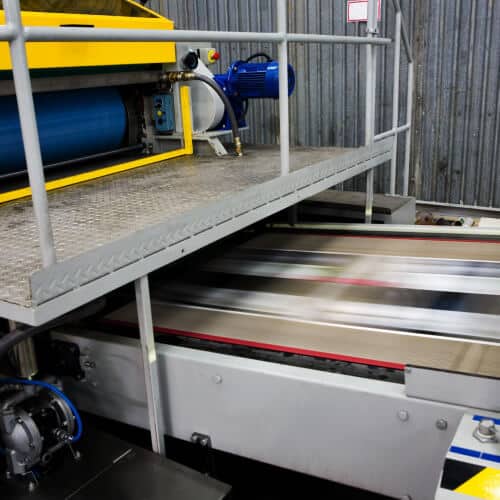The Essential Overview to Comprehending Litho Printing and Its Applications
Litho printing stands as a significant approach in the printing market, rooted in the principles of oil and water repulsion. This strategy not only supplies top notch pictures but additionally caters to numerous industrial needs. Its applications vary from advertising and marketing materials to product packaging, showcasing its adaptability. As the industry adapts to brand-new technologies, the advancement of litho printing raises inquiries concerning its future and importance in a digital landscape. What exists ahead for this sustaining method?

What Is Litho Printing?
Litho printing, a widely utilized printing strategy, depends on the principle of oil and water repulsion. This method utilizes a flat printing surface, commonly a metal plate, which is treated to guarantee that the picture areas are receptive to oil-based inks while the non-image areas repel them. The process begins with the development of a picture on the plate, typically with illustration or photo ways. When the picture is prepared, the plate is moistened with water, adhered to by the application of ink. The ink sticks just to the photo locations, enabling specific recreation of graphics and message. Litho printing is favored for its ability to create high-quality prints with great detail and vibrant colors. It is frequently made use of in business applications, consisting of newspapers, magazines, and product packaging, showcasing its versatility and performance in fulfilling the needs of modern-day printing.
The Background of Lithography
Although lithography is a modern-day printing staple, its origins trace back to the late 18th century when German dramatist Alois Senefelder developed the technique in 1796. Developed as an approach for replicating texts and images, lithography used a flat rock surface area to produce prints via a chemical process. Senefelder's innovation enabled better flexibility and creative expression compared to previous printing methods.By the 19th century, lithography got widespread acceptance, coming to be a popular option among musicians and authors. It enabled the mass manufacturing of illustrations, maps, and posters, significantly influencing the printing industry. The method further progressed with the introduction of lithographic presses, improving effectiveness and quality.As the commercial change progressed, lithography adapted to fulfill the needs of business printing, leading the method for contemporary applications. Today, it continues to be a necessary method in different fields, including publishing, product packaging, and great art reproduction.
Exactly How Litho Printing Functions
A key feature of litho printing is its reliance on the principle of oil and water repulsion - litho printing. In this process, pictures are moved from a level surface area, typically a steel or polymer plate, to paper. The plate is dealt with to make sure that the locations planned for printing bring in ink, while the non-image locations repel it as a result of their fondness for water. The printing starts by wetting home plate with water, which follows the non-image locations. Ultimately, an oil-based ink is used, sticking just to the desired photo areas.When home plate comes into contact with the substrate, the ink is transferred, developing a print. The litho printing procedure can creating high-grade photos with great information. It is often used for mass production as a result of its performance and uniformity, making it a favored technique for commercial printing applications
Advantages of Litho Printing
One notable advantage of litho printing is its capability to produce high-grade pictures consistently, making it an ideal option for industrial projects. This printing approach utilizes a level printing plate, guaranteeing also ink distribution and sharp information. Litho printing is likewise renowned for its shade accuracy, making it possible for lively and true-to-life recreations, which is important for branding materials.Moreover, it supports a wide range of substratums, consisting of paper, cardboard, and even particular plastics, enhancing its versatility. The procedure is economical for huge runs, as economic climates of range reduce per-unit expenses. In enhancement, litho printing has a quick turn-around time, enabling effective manufacturing schedules.Its resilience likewise suggests that printed materials withstand fading, ensuring that the final product preserves its aesthetic allure over time. In general, these benefits make litho publishing a recommended selection across numerous industries, adding to its enduring popularity.
Applications of Litho Printing in Company
As services significantly look for reliable and premium printing options, litho printing emerges as a principal in numerous applications. This strategy is specifically preferred for generating advertising and marketing products such as sales brochures, leaflets, and catalogs, many thanks to its capacity to supply lively shades and sharp pictures. In addition, litho printing is regularly used for product packaging options, enabling business to create appealing labels and boxes that enhance item appeal.In the field of corporate identity, litho printing contributes in generating expert stationery, calling card, and promotional goods, which aid strengthen brand acknowledgment. It is extensively utilized in the publishing sector for printed products such as books and publications, where constant top quality is vital. In general, litho printing's versatility and performance make it a vital tool for services aiming to interact effectively and establish a solid market presence.
Artistic Utilizes of Litho Printing
Litho printing works as a flexible tool in the domain of printmaking, offering musicians an unique technique to reveal their creative thinking. This method permits for a large range of imaginative applications, from check these guys out conventional prints to modern analyses. By checking out the nuances of litho printing, musicians can harness its distinctive qualities to improve their job.

Printmaking Methods Introduction
The virtuosity of printmaking encompasses a varied variety of techniques, with litho printing sticking out for its distinct technique to photo production. This method counts on the concept of oil and water repulsion, permitting musicians to draw directly onto a limestone or steel plate with an oily medium. When prepared, home plate is moistened and inked, moving the photo onto paper with pressure. Litho printing is celebrated for its capacity to create fine information and rich tonal variations, making it a favored selection amongst artists. Additionally, the procedure is flexible, accommodating both typical strategies and contemporary adaptations. This flexibility enables litho printing to bridge various imaginative designs, enriching the printmaking landscape with its distinct features and capabilities.
Unique Artistic Applications
Discovering the special artistic applications of litho printing discloses its amazing versatility in numerous creative areas. Artists use litho printing to produce intricate styles and textures, permitting expressive and thorough works. The procedure facilitates the recreation of vivid shades, making it optimal for illustrations and art prints. Several contemporary musicians welcome lithography for its capability to incorporate traditional methods with modern ideas, causing ingenious art work. Additionally, litho printing is typically used in the production of restricted version prints, enhancing their worth and allure. The tactile high quality of litho prints includes a distinct dimension, drawing in enthusiasts and art enthusiasts alike. In general, litho printing stays a substantial medium for creative expression, connecting timeless approaches with contemporary creativity.
The Future of Litho Printing in a Digital World
As the printing market progresses, litho printing encounters the obstacle of integrating digital innovations to stay appropriate. Methods concentrated on electronic assimilation, along with fads in sustainability and technology, will shape its future - litho printing. Understanding these characteristics is essential for industry stakeholders looking to adjust to a swiftly transforming landscape
Digital Combination Methods
A growing number of litho printing business are embracing digital integration approaches to remain affordable in a progressively digital landscape. By incorporating electronic workflows, these business can simplify procedures and enhance efficiency. This assimilation permits real-time data monitoring and enhanced communication between divisions, minimizing turnaround times noticeably. Furthermore, digital devices allow far better modification and personalization of published materials, catering to certain client needs. Firms are likewise taking on crossbreed printing solutions that incorporate conventional litho techniques with digital technologies, using flexibility in manufacturing. Furthermore, leveraging information analytics assists in understanding market patterns and customer preferences, permitting companies to make enlightened decisions. Overall, digital assimilation is becoming necessary for litho printing business aiming to introduce and reply to evolving market requirements.
Sustainability and Advancement Fads

Regularly Asked Concerns
What Products Are Typically Made Use Of in Litho Printing?
The materials typically made use of in litho printing include aluminum plates, ink, water, and paper. Each element plays an important duty in the printing process, making sure top quality photo reproduction and efficient transfer of ink onto the substratum.
Exactly How Does Litho Printing Compare to Digital Printing?
Litho printing provides premium color uniformity and top quality for large runs, while digital printing masters short runs and personalization. Each approach has distinctive advantages, satisfying various needs based upon manufacturing range and cost-efficiency.
What Is the Typical Turnaround Time for Litho Printing Projects?
The normal turn-around time for litho printing projects varies, usually ranging from a couple of days to several weeks. Variables influencing this here are the findings timeframe consist of project complexity, quantity, and required finishing processes, affecting general manufacturing timetables.
Can Litho Printing Accommodate Custom Sizes and Formats?
Litho printing can certainly fit custom-made dimensions and styles, permitting versatility in layout. This flexibility makes it possible for customers to attain one-of-a-kind print end results customized to their certain demands, boosting the general effectiveness of their tasks.
What Are the Ecological Influences of Litho Printing?
The environmental influences of litho printing consist of resource usage, chemical use, and waste generation. Improvements in sustainable practices and eco-friendly products are progressively minimizing these negative results, advertising a more eco accountable method to printing.
Comments on “How litho printing Contributes to Sustainable Business Practices”